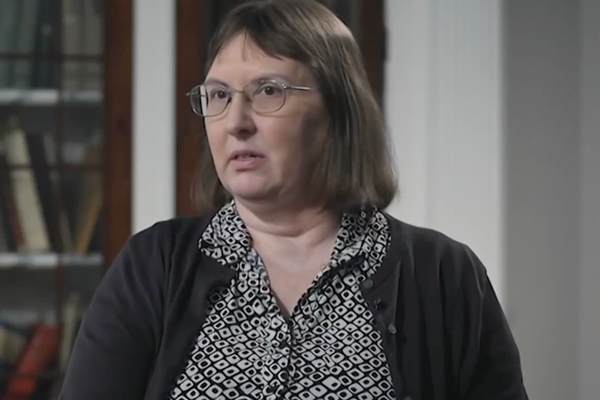FISH CAMP, Calif. — The first that Michael Gilbert, a 67-year-old rock climber and bellman, heard of the fire in Yosemite National Park was from a mother and daughter who drove up breathless on Friday.
They had been near the park’s famed Mariposa Grove of giant sequoias. They saw a fire “this big,” the mother said, stretching her arms wide, indicating a few feet. They ran for a few seconds and looked back. Two trees were on fire. Twenty seconds later, she said, more trees than she could count.
As she told the story, fire planes were already crossing overhead, Gilbert recalled Saturday from his post at Tenaya Lodge.
By Saturday morning, the Washburn fire had ballooned to about 703 acres and was threatening some 500 giant sequoias, along with the community of Wawona.
The blaze was the latest to menace the ancient giants, which are found in the wild only on the western slopes of the Sierra Nevada. Although they are adapted to thrive in fire, the sequoias are increasingly no match for high-severity wildfires driven by climate change, drought and decades of aggressive fire suppression that has resulted in a buildup of dense vegetation in some forested areas.
“Because of that combination, we are having these fires that are large and intense and last longer than what anybody’s seen in any part of their experience,” said Nancy Phillipe, a Yosemite fire information spokesperson.
Crews were spraying down trees in Mariposa Grove and scraping the ground to bare mineral soil to try to slow the fire’s spread, she said. They were also wrapping some of the sequoias in protective foil, prioritizing the oldest named trees like the Grizzly Giant.
“This 2,000- to 3,000-year-old tree has a rich, vast history that goes back to Abraham Lincoln,” Phillipe said. The president signed legislation protecting the grove and Yosemite Valley in 1864, a precedent that paved the way for the creation of national parks and which some say marked the beginning of the modern conservation movement.
“There’s this amazing feeling that you get as you’re with those giant trees — it just kind of consumes you,” Phillipe said. “It’s such a powerful connection to history and nature and the park.”
On Saturday, Gilbert appointed himself comforter-in-chief to the many tourists who had traveled from around the world to see Yosemite’s wonders and were blocked by the fire.
He directed a family of five from Australia to the south to Sequoia National Park.
“You still have a chance to see the giants,” he told them.
DeAnne Smith, who was visiting from Texas, showed him a photo she took driving out of the park Friday evening.
“The fire was literally right in front of us,” she said.
Her family was among the last out before the road south from Wawona closed. About 1,600 residents and visitors were evacuated, according to Phillipe.
“I’m just sad for the sequoia,” Smith said. “I desperately want them to save the sequoia trees.”
The fire started about 2 p.m. Thursday in the grove off the Washburn trail, Phillipe said. The cause remains under investigation, but she noted the weather was clear and there were no obvious indications that the fire began naturally.
No containment had been reported as of Saturday afternoon. Officials were concerned that lower humidity and higher temperatures forecast for the weekend could help drive the fire’s spread.
“We’re just really hitting it hard with the aerial resources and the ground resources that we have,” Phillipe said. “The next 48 hours will be critical for us.”
About 95% of Yosemite National Park is wilderness and fire plays a natural role in its ecosystem, so officials often manage fires for resource benefits rather than immediately extinguishing them. This blaze is different because of the threat it poses to Wawona and the Mariposa Grove, so crews are taking an all-out suppression approach that includes using bulldozers to create a barrier around the community, Phillipe said.
“We normally don’t have dozers coming in to dig line,” she said. “We don’t normally have retardant being dropped in the park. But that’s how important these resources are and why we’re using everything we can, from sunup to sundown.”
Authorities were hoping that a history of prescribed burns in Mariposa Grove would help mitigate the damage there. The forest is adapted to frequent, low-intensity fires sparked by lightning and intentionally set by Indigenous people. The Park Service has sought to mimic this regime by regularly setting fires that burn along the forest floor to clear out brush and so-called ladder fuels that could otherwise help carry flames up into the canopy and kill trees.
Research has shown that landscapes that have been regularly treated with prescribed burns can help slow wildfires, giving firefighters a better chance to get the upper hand.
“What we’ve discovered is that as we’ve received unwanted fires, when they come into the prescribed burn areas, it does slow down that rate of spread and really helps us work toward containment,” Phillipe said.
At the same time, she said, parts of the grove still have dense concentrations of dead plant material due to bark beetle kills that have plagued the Sierra Nevada. These infestations can become more destructive during droughts because trees are unable to produce enough sap to fight them off. And last year, a Mono wind event that tore through the grove felled at least 15 sequoias, which remain on the forest floor and could help fuel the fire.
The 78 giant sequoia groves scattered across the Sierra amount to just 25,000 acres, said Joanna Nelson, director of science and conservation planning at Save the Redwoods League. The species has lived alongside fire for millions of years, with thick bark and branches adapted to reach above flames. The trees rely on low- to moderate-intensity fire to reproduce, as bursts of heat prompt their cones to open and flames clear duff from the forest floor so the seeds can better germinate in the soil below, said Joanna Nelson, director of science and conservation planning at the nonprofit conservation group Save the Redwoods League.
But wildfires have decimated sequoia populations in recent years because of a federal policy of fire exclusion and the outlawing of cultural burning combined with an era of warming and drying that together have made it easier for fires to ignite and burn while providing an abundance of fuel to stoke them, she said.
“The fires that we’re getting now are incredibly intense and destructive and they’re killing large mature trees for the first time on record,” she said. “In any recorded history we have through tree rings, we don‘t see this kind of mortality until now.”
The pattern began to emerge in 2015, when the Rough fire that started in Sierra National Forest killed at least 100 large, mature sequoias as it burned into seven different groves. That was followed by 2017, when the Pier fire in Sequoia National Forest and the Railroad fire in Sierra National Forest together killed about 120.
Three years later, the Castle fire in Sequoia National Forest and Giant Sequoia National Monument killed an estimated 7,500 to 10,600 mature sequoias — 10% to 14% of the world’s natural population. Then last year, up to 3,630 sequoias were killed by the KNP Complex fire in Sequoia and Kings Canyon National Parks and the Windy fire in Sequoia National Forest, which together are estimated to have claimed another 5% of their numbers.
“If you lose an estimated 19% of giant sequoias in 14 months — and you’ve definitely lost 20% of them in six years — that’s just by the numbers not sustainable,” Nelson said. “We can’t just keep going like this.”
If the trend continues, she said, there’s a chance that the trees will be found only in a greenhouse or seed bank rather than the Sierra Nevada.
What’s required to save them is a combination of a reduction in greenhouse gas emissions to slow warming and an increase in on-the-ground stewardship such as thinning and prescribed fire to reduce fuel, she said.
“Having these large, incredibly grand trees out in the mountains where people can walk under them is important to me,” she said.
In the meantime, those in Yosemite were bracing for another summer of destructive fires. Visitors to Tenaya Lodge splashed in the hotel pool and looked unnaturally tan from the orange reflection of smoke. All around were dead and dying trees.
“The Railroad fire, the Junction fire,” said Rebecca Casey, who runs recreational activities, counting off the reasons on her fingers. “The drought. The bark beetles.”
She has been through four preevacuations and two lengthy evacuations.
“It always seems like it is going to be OK until they say it’s time to leave,” she said.
(Wigglesworth reported from Los Angeles and Marcum from Fish Camp)







